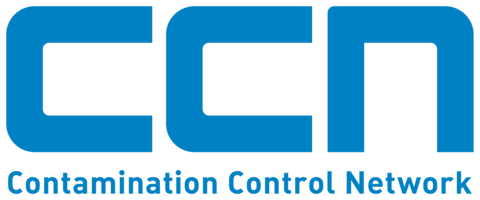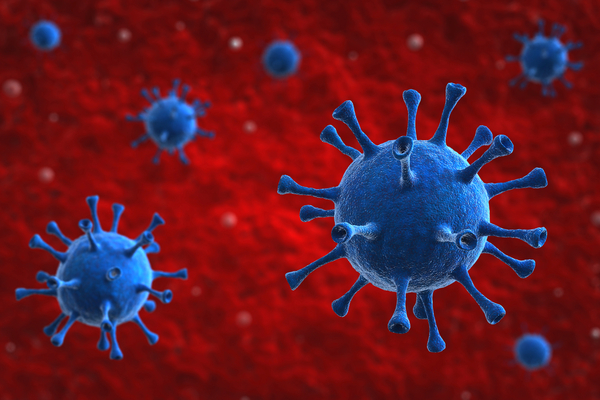Practical advice for reducing the risk of airborne transmission via HVAC systems by Keith Beattie, ECCO2
The scientific evidence of the role of HVAC in SARS-CoV-2 virus transmission is currently inconclusive, so as understanding develops, guidance may change and impact the management of risk.
World Health Organisation (WHO) advice and local government regulations should be consulted as part of the development of a risk management plan, and this should be reviewed regularly.
Scope of reference
This article contains practical advice to assess the risks and take appropriate action to minimise the risks associated with the airborne transmission of SARS-CoV-2, with reference to other studies of similar infectious diseases, e.g. SARS and influenza.
Definitions
| Space Category | GMP Areas | Non-GMP |
| Classified Areas | Spaces that are classified by particle concentration and/or microbiological contamination to the industry standard of ISO 14644 and EU GMP, FDA guidelines or other International Pharmaceutical Regulations. | N/A |
| Un-classified Areas | CNC (controlled not classified) spaces. These include Secondary Packaging and support corridor spaces. | N/A |
| Other areas | Spaces that are controlled under GMP regulations but are not considered classified or unclassified. Examples include Warehousing, Some Laboratories, Storage. | Spaces that are controlled for comfort conditions and are not regulated by GMP rules. Examples include Offices, Food Services Areas, Technical Spaces, Toilets/Restrooms, Control Rooms, Laboratories. |
HVAC in Classified & Unclassified Areas (GMP)
GMP Cleanroom HVAC Systems are inherently designed, validated & operated specifically to manage external and internal contamination of all types. It is recommended that these systems are NOT modified in line with general HVAC system guidance. GMP HVAC systems should be considered low or very low risk regarding SARS-CoV-2 airborne transmission due to extensive use of HEPA filtration and multiple stages of lower-level filtration.
Secondary protection via existing PPE, social distancing and operation requirements should be the primary focus within Classified and Unclassified GMP spaces.
Other Area HVAC systems are designed differently and with significant variation and, as such, can pose a higher risk compared to Classified and Unclassified GMP in assisting the transmission of SARS-CoV-2 (and other infectious diseases).
HVAC in Other Areas (GMP & Non-GMP)
In 2020 both ASHRAE and CIBSE published HVAC general area guidance for both during the epidemic and re-opening areas post-epidemic (i.e. after lockdown periods). Most of the proposed short-term HVAC system recommendations increase energy consumption. It is essential to make the necessary temporary HVAC system modifications to protect people and limit the spread of SARS-CoV-2 throughout the outbreak/epidemic.
Continual review of the situation will enable appropriate actions to be taken once the outbreak has ceased or sufficiently under control in any given geographical region. We recommend that each space type and HVAC system is evaluated to account for human safety and comfort and delivered with minimum energy requirements. Many systems may require long-term improvements to limit fossil fuel consumption in line with international, local and company targets.
Hazards - SARS-CoV-2 Airborne transmission
Direct sources of SARS-CoV-2 to air are from coughing/sneezing directly from a person within close proximity (1-2m) or indirect water aerosol from flushing WCs. Virus particles attach or combine with droplets of broadly two size characteristics, larger droplets and smaller droplets. Other infectious disease studies have shown that the majority fraction of virus’ (influenza) present on airborne particles were likely to be in the 1-3 micron and 3-10 micron range and above, assuming an even distribution of virus across particle sizes. This aligns with guidance from industry bodies around airborne transmission.
Larger airborne droplets (around 10 microns or larger)
- Contamination path: typically falls to the ground or surfaces within 1 – 2 metres (3 – 6 feet)
- HVAC Considerations:
- Not typically distributed via HVAC systems outside of rooms
- If small risk droplets entrained to air, they would deposit in ductwork, or most standard filtration will capture
Smaller airborne droplets/droplet nuclei (around 5 microns or smaller)
- Contamination path: small droplets/droplet nuclei can be carried in HVAC airstream, the virus can remain active for up to 3 hours (longer once deposited on surfaces)
- For HVAC Systems with lower filtration levels (typically found in Other Areas), - recirculating air may present an infection risk via airborne transmission.- increasing ventilation rates of exhaust air and outside air may reduce the risk of potential infection via airborne transmission
Control of Hazards during epidemic periods
At present, there is little scientific knowledge demonstrating the hazard relationship of airborne transmission via HVAC systems and subsequent infection rates for SARS-CoV-2. Much of the industry guidance is based on the past scientific study of other similar infectious diseases, e.g. SARS and influenza.
A risk assessment before action is recommended but should, as far as reasonably possible, account for all direct and indirect consequences of modifying HVAC systems concerning a hazard that is not fully understood at this time, rather than following blanket recommendations which a specific system or space type may not suit.
Coronavirus (SARS-CoV-2) – Practical advice for reducing the risk of airborne transmission via HVAC systems - Parts 2 and 3 will cover
Risk potential of HVAC airborne transmission
Risk Assessment considerations for HVAC changes
Action Prioritisation
Practical HVAC Actions during epidemic / outbreak
Frequently Asked Questions
Appendix A – Space Definitions
Article References
REHVA: https://www.rehva.eu/activities/SARS-CoV-2 -guidance
ASHRAE: https://www.ashrae.org/technical-resources/resources
CIBSE: http://www.cibse.org/coronavirus-SARS-CoV-2/coronavirus-SARS-CoV-2 -and-hvac-systems
https://www.cibse.org/coronavirus-SARS-CoV-2/emerging-from-lockdown
The Built Environment Research Group: https://www.sciencedirect.com/science/article/pii/S0360132313002515
Become a "No Fee" member to hear about the latest news and free webinars first!

